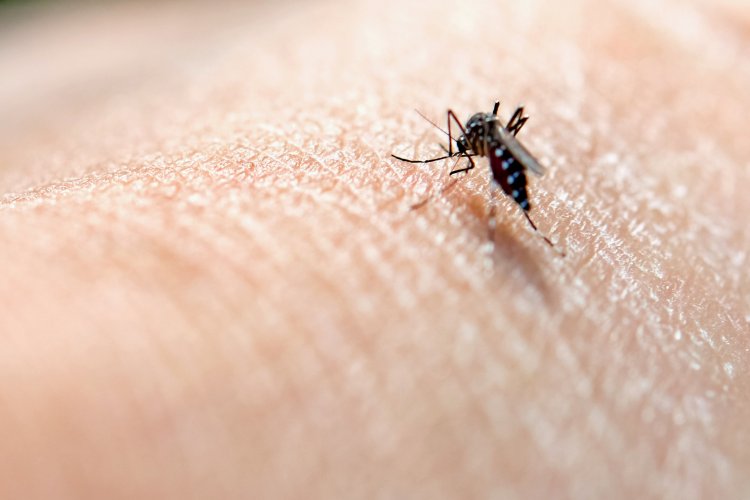Unraveling Malaria: Symptoms, Causes, Diagnosis, Treatments, and Prevention Strategies
Malaria, a formidable adversary of public health, continues to exact a heavy toll on populations worldwide. Despite concerted efforts to combat the disease, malaria remains a leading cause of morbidity and mortality, particularly in regions with limited resources and infrastructure. In this comprehensive discourse, we delve into the intricacies of malaria, exploring its symptoms, causes, diagnosis, treatment modalities, and preventive measures.

Symptoms of Malaria
Malaria manifests with a diverse array of symptoms, ranging from mild to severe. Fever, often accompanied by chills, is a hallmark feature of the disease. Patients may also experience headache, muscle aches, fatigue, nausea, and vomiting. The cyclical nature of malaria fevers, characterized by alternating periods of fever and sweating, is characteristic of the infection. In severe cases, malaria can progress rapidly, leading to complications such as cerebral malaria, severe anemia, metabolic acidosis, acute respiratory distress syndrome (ARDS), and multi-organ failure.
Causes and Transmission
Malaria is caused by Plasmodium parasites, which are transmitted to humans through the bite of infected female Anopheles mosquitoes. These mosquitoes breed in stagnant water and are most active during dawn and dusk, increasing the risk of transmission during these periods. The geographical distribution of malaria is influenced by factors such as climate, ecology, and socio-economic conditions. While five species of Plasmodium can infect humans, Plasmodium falciparum is responsible for the majority of malaria-related deaths globally, particularly in sub-Saharan Africa.
Diagnosis Methods
Accurate and timely diagnosis of malaria is paramount for effective management and prevention of complications. Microscopic examination of blood smears remains the gold standard for malaria diagnosis, allowing for species identification and quantification of parasitemia. Rapid diagnostic tests (RDTs), which detect specific malaria antigens, provide a rapid and convenient alternative in settings with limited laboratory infrastructure. Molecular techniques such as polymerase chain reaction (PCR) are employed for confirming diagnosis and detecting low-level parasitemia.
Treatment Strategies
The treatment of malaria is tailored to factors such as the infecting Plasmodium species, the severity of the infection, and the patient's age and clinical status. Artemisinin-based combination therapies (ACTs) are recommended as first-line treatment for uncomplicated falciparum malaria, owing to their rapid onset of action and efficacy. In regions where chloroquine-sensitive Plasmodium vivax strains predominate, chloroquine remains the treatment of choice. Severe malaria necessitates aggressive management with intravenous artesunate or quinine, accompanied by supportive care measures to address complications such as hypoglycemia, renal failure, and respiratory distress.
Complications and Prognosis
Untreated or inadequately treated malaria can lead to severe complications and death. Complications may include cerebral malaria, characterized by altered consciousness, seizures, and neurological deficits. Severe anemia, resulting from the destruction of red blood cells by the parasite, can precipitate cardiovascular collapse and organ failure. Acute respiratory distress syndrome (ARDS) may ensue from the systemic inflammatory response to malaria infection, leading to respiratory failure and hypoxemia. Prompt diagnosis and appropriate treatment significantly improve prognosis and reduce mortality rates associated with severe malaria.
Prevention Strategies
Preventing malaria transmission necessitates a multifaceted approach encompassing vector control, chemoprophylaxis, and community engagement. Insecticide-treated bed nets (ITNs) and indoor residual spraying (IRS) are frontline interventions for reducing mosquito populations and preventing bites. Larval control measures such as environmental manipulation and larviciding target mosquito breeding sites, reducing vector abundance and transmission risk. Chemoprophylaxis with antimalarial medications is recommended for travelers visiting malaria-endemic regions, with drug choice guided by local resistance patterns and individual risk factors.
In conclusion, Malaria remains a formidable challenge to global health, requiring sustained efforts and innovative solutions to achieve meaningful progress. By addressing the socio-economic determinants of malaria, strengthening healthcare infrastructure, and promoting research into new prevention and treatment strategies, we can advance towards the goal of malaria elimination. Through collaborative action and collective commitment, we can mitigate the burden of malaria and pave the way for a healthier, malaria-free world.
#Malaria #symptoms #causes #diagnosis #treatment #prevention #complications #epidemiology #research #severemalaria #plasmodiumfalciparum #rapiddiagnostictests #vectorcontrol #malariaards #chloroquineresistance #socioeconomicfactors #artemisinincombinationtherapies
Disclaimer:
The information provided in this article is for educational purposes only and should not be considered medical advice. If you have any health concerns or are experiencing symptoms, it is important to consult with a healthcare professional, such as a doctor or clinic, for proper diagnosis and treatment. Always seek the advice of your doctor or other qualified health provider with any questions you may have regarding a medical condition. Do not disregard professional medical advice or delay in seeking it because of something you have read in this article.
What's Your Reaction?





















